
How to grow a tea plant in a pot?
Our tips to successfully plant and care for Camellia sinensis at home
Contents
The genus Camellia is formed of over a hundred species. We are well acquainted with camellias grown for their stunning flowerings. But did you know that another camellia is primarily cultivated for its leaves, which produce one of the most consumed beverages on the planet? This is Camellia sinensis, or tea plant.
Even though it originates from a subtropical region, this perennial bush of heather soil can be successfully cultivated in our latitudes. In open ground, it will thrive in the mild, humid oceanic climate of the Atlantic coast. Elsewhere, pot cultivation will be perfectly suitable, on a terrace, balcony, or in a sheltered corner of the garden.
Let’s see how to easily grow tea at home!
What is the tea plant?
Camellia sinensis, also known as the wild tea bush, is a small bush from the family of Theaceae, originating from southern China. It has a bushy habit and reaches about 2.5 metres in height and 1 metre in spread in our climates. The tea bush flowers twice a year, in early summer and autumn. It is adorned with charming white rose-like flowers, revealing a large heart of yellow stamens. Its dark green dentate leaves, with a glossy appearance, are evergreen. These leaves are what will allow you to make homemade tea after drying.
Beware of confusion: the tea tree, particularly known for its use in essential oil, is not the same plant. It is Melaleuca alternifolia, a bush belonging to the family of Myrtaceae and originating from Australia.
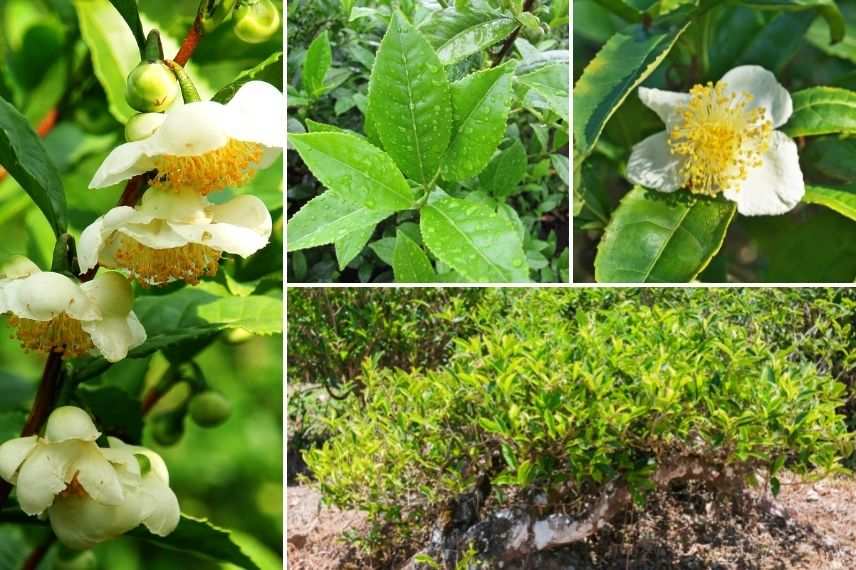
Camellia sinensis
Read also
Camellias: planting, pruning and careWhen to plant Camellia sinensis in a pot?
The best times for pot planting a tea plant are in spring and autumn, specifically between February and April or between September and November.
Always avoid dry periods or frost periods, which can weaken the plant and affect its recovery.
Discover other Camellia
View all →Available in 0 sizes
Available in 1 sizes
Available in 1 sizes
Available in 1 sizes
Available in 1 sizes
Available in 1 sizes
Available in 1 sizes
Available in 1 sizes
Available in 1 sizes
Available in 1 sizes
Planting the tea plant in a pot
Container
Choose a sufficiently large container for growing your tea plant. It should have a depth and diameter of at least 40 cm.
Opt for a pot or a large trough that is definitely perforated, to allow excess water to drain away without stagnating.
Prefer a terracotta container, a porous material that allows the substrate to breathe better. A plastic pot will retain moisture more effectively but can lead to temperature extremes.
Substrate
As acidophilous bushes, tea plants appreciate cool soils that remain moist but are always well-drained, to ensure good aeration of the roots. They thrive in a rich substrate with an acidic, non-limestone pH.
For pot planting of Camellia sinensis, mix:
- 2/3 of heather soil
- 1/3 of good quality horticultural compost, decomposed leaf compost, or light, non-limestone garden soil
- a handful of sand to promote drainage (facultative)
Planting
- Line the bottom of the container with a drainage layer of about 5 cm (clay balls, gravel, terracotta shards, pouzzolane,…).
- Install a first layer of substrate.
- Place the plant in the centre of the container and fill in with substrate.
- Firm down with your fingers and add more substrate without burying the root ball too deeply (just under 2 or 3 cm of soil).
- Water generously at the base of the plant.
- Cover with a mulch of pine bark.
It is also possible to obtain tea seeds. However, sowing is quite uncertain and complicated to succeed. Germination takes several weeks and requires demanding conditions of sunlight and warmth. You will need to be patient before hoping to obtain a vigorous Camellia sinensis plant from sowing.
Exposure
Place your potted tea plant in a sunny or partially shaded location. While it needs light to develop well, it cannot tolerate the scorching rays of the sun and overly hot southern exposures.
The bush should also be protected from prevailing cold and drying winds. Preferably position it near a wall.
The Camellia sinensis can also be grown indoors, but it will need ventilation and plenty of natural light.
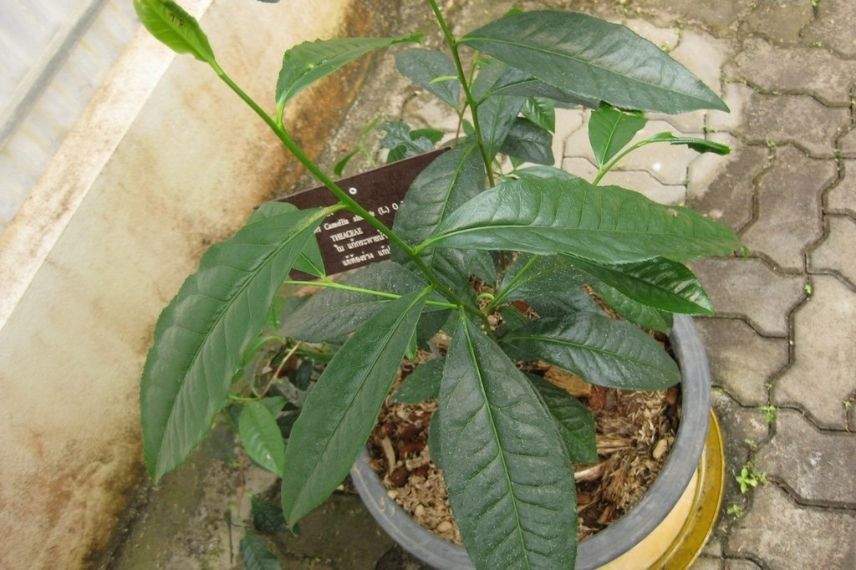
(photo Raffi Kojian – Wikimedia)
Caring for a potted tea plant
The tea plant requires minimal maintenance. However, regular monitoring is always recommended for potted plants, which are more sensitive than those grown in the ground.
For optimal growth, it is ideal to replicate the growing conditions found in its native habitat, combining warmth and humidity.
Watering
The tea plant thrives in cool, well-drained soils. Water regularly at the base of the plant as soon as the substrate is no longer moist, approximately 1 to 2 times a week.
In summer and during prolonged dry spells, increase the frequency of watering.
Watering should be reduced but still regular in winter. Water as soon as the substrate becomes dry in the top few centimetres.
Mulching will help space out watering and better retain moisture at the base of the plant.
Prefer rainwater over tap water, which is often too chalky and chlorinated.
Do not hesitate to mist the foliage in the late afternoon, once the sun is no longer likely to cause burns, to recreate a humid atmosphere.
Fertilisation
The camellia sinensis appreciates regular fertiliser applications for healthy growth, especially in pots, as the substrate loses nutrients more quickly.
Twice a year, in early spring and autumn, you can add a handful of well-rotted compost to your tea plant. Use a tool or fork to mix the compost into the rest of the substrate, being careful not to damage the plant’s roots.
You can also opt for a fertiliser for acidophilous plants, following the dosages indicated by the manufacturers on the packaging.
The presence of a pine bark mulch also provides nutrients gradually as it decomposes.
Pruning
The tea plant does not require any specific pruning.
In pots, after a few years, you can simply lightly shorten any branches that disrupt the shape, using a previously disinfected pruning shear.
Do this at the beginning of spring, once the last risks of frost have passed.
Repotting
The camellia sinensis has a relatively slow growth rate. Repotting should occur as the bush grows, generally every 2 to 3 years. As soon as the plant appears to be cramped in its pot, with roots protruding from the substrate or drainage holes, provide it with a container slightly larger than the original.
Diseases
Tea plants are quite resilient and are not known to be particularly susceptible to pests and diseases.
In the event of an aphid infestation, dislodge the pests with a simple jet of water. Scale insects can be repelled with a diluted black soap solution (1 tablespoon in 1 litre of water), sprayed on the affected areas in the late afternoon.
Wintering
A semi-hardy shrub, the tea plant can withstand negative temperatures down to about -10 to -12°C for short periods.
However, due to its origins, it prefers mild climates with low temperature fluctuations between seasons.
Provide it with a sheltered position in regions with harsh winters, protecting it in a frost-free location, such as a cold greenhouse or conservatory. You can take the pot outside again once the warmth returns, around May.
If your pot remains outside, provide a thick mulch to protect the base of the camellia. Surround the pot with insulating materials (bubble wrap, cardboard, thick fabric, etc.), elevate it off the ground with supports, and install a winter fleece over the aerial parts.
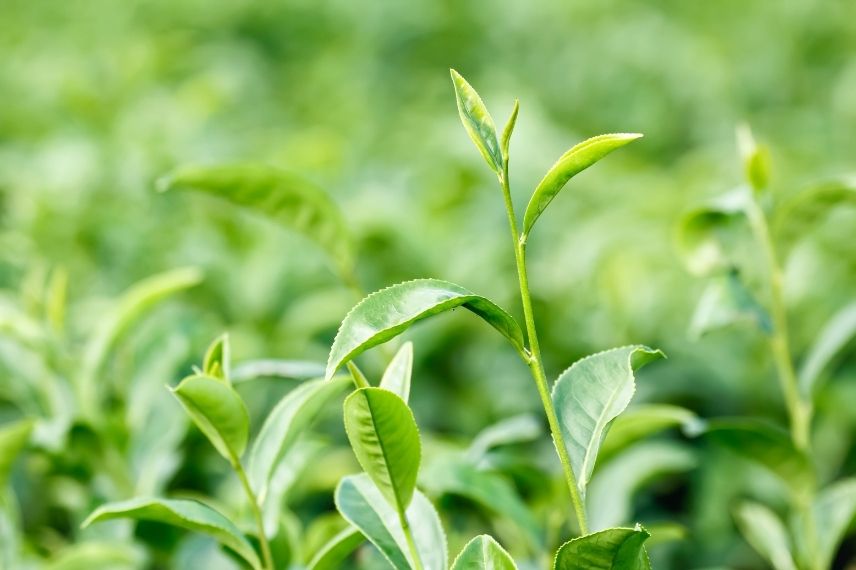
Camellia sinensis
- Subscribe!
- Contents
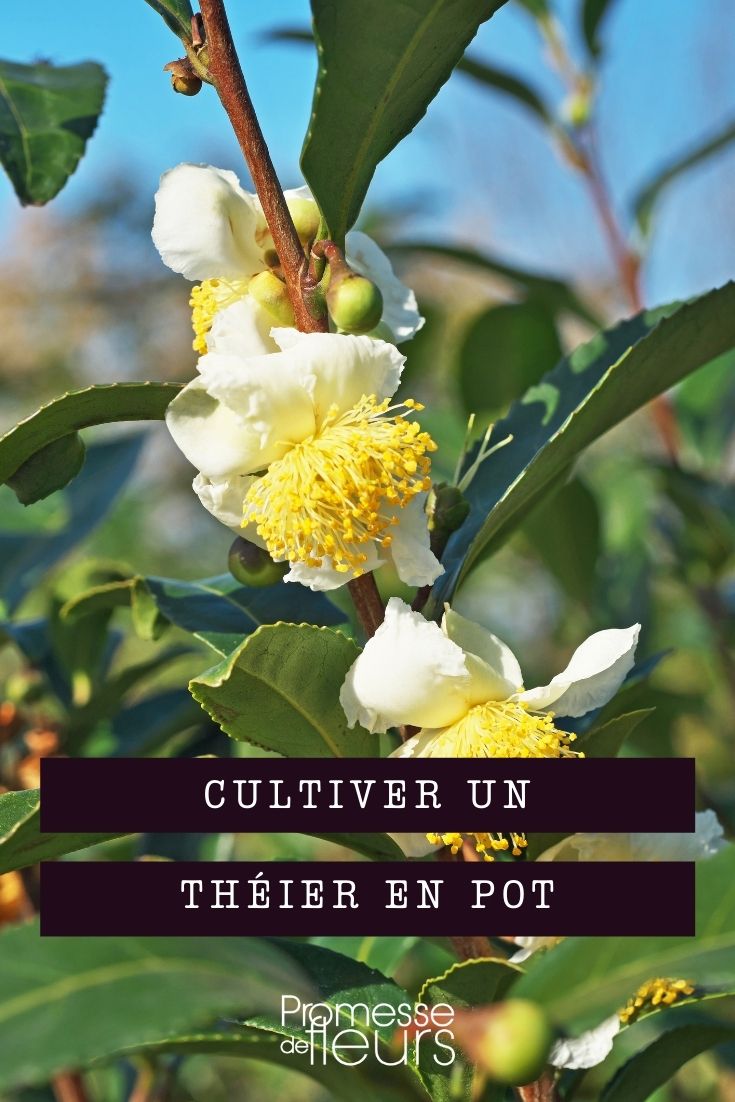































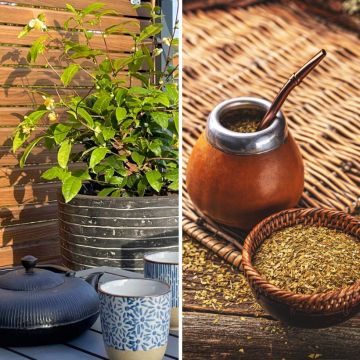
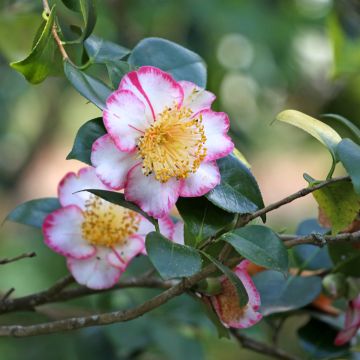
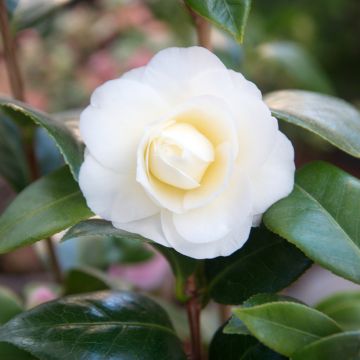


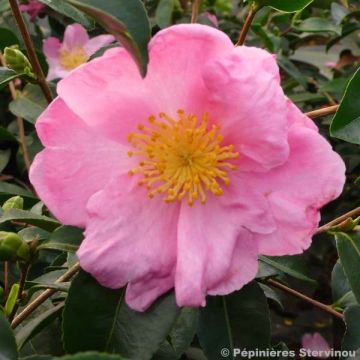
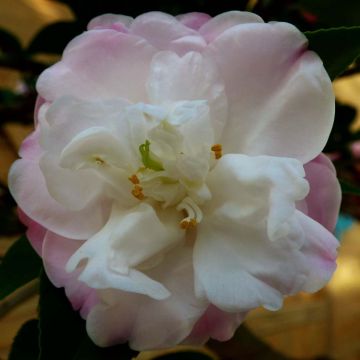
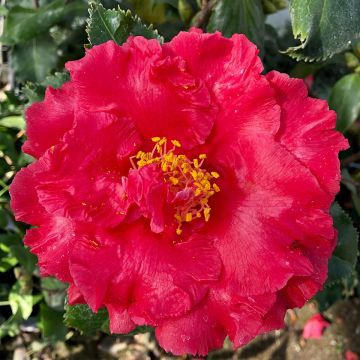


Comments